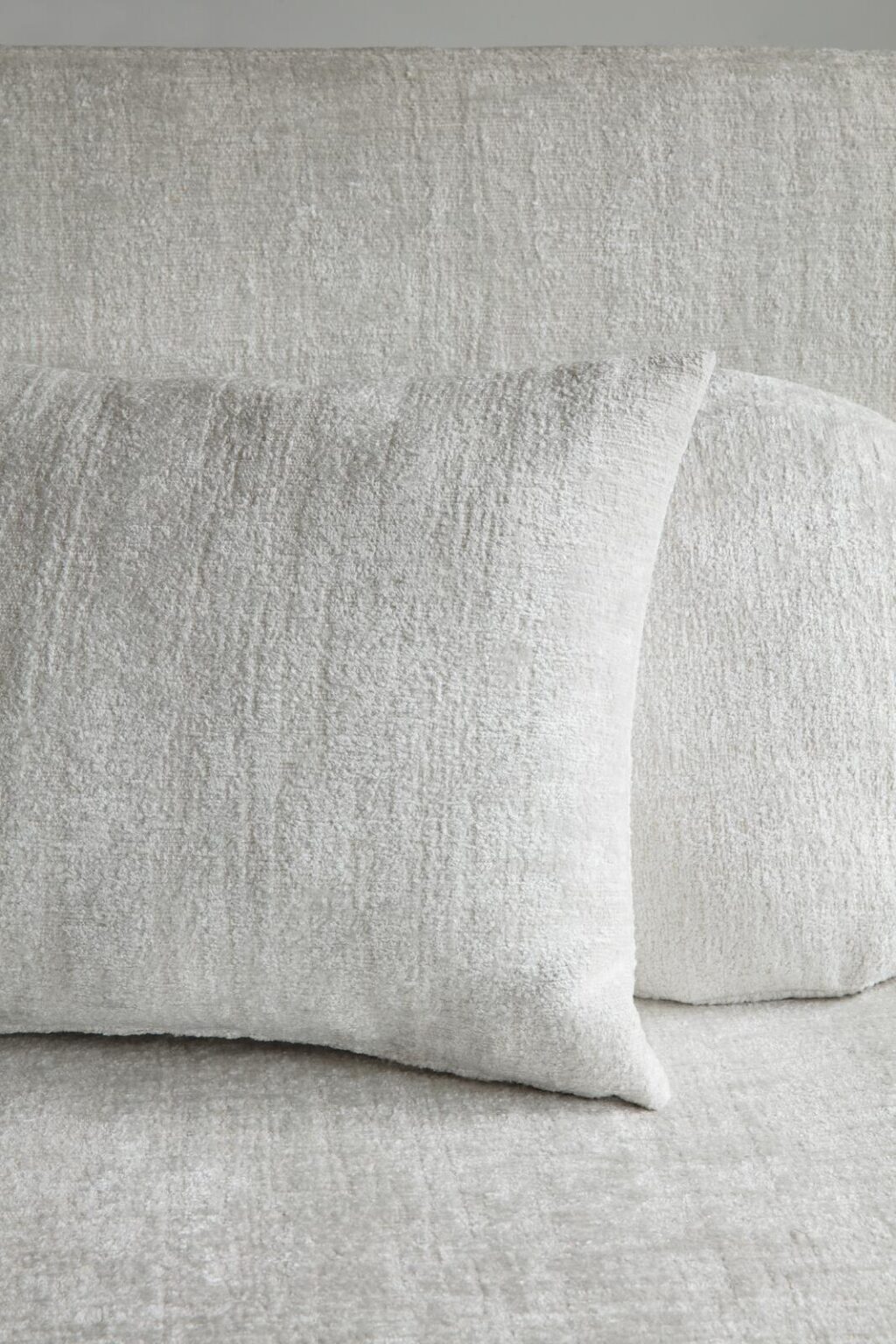What is chenille upholstery fabric?
Chenille upholstery fabrics are a popular choice in the textile industry. It has a smooth, silky texture that resembles velvet, but the manufacturing processes are quite different.
So, what is it, and how is it made?
What is chenille upholstery?
The word chenille refers to both the final product and the type of yarn used to make it. The word "chenille," itself, which means "caterpillar" in French, comes from the fuzzy appearance of chenille yarn. These fabrics are made from various fibres, such as rayon, cotton, and synthetic blends, and are known for their softness, durability, and luxurious touch.

White, neutral FibreGuard chenille upholstery fabric in a living room.

The same FibreGuard chenille upholstery fabric, close up

FibreGuard chenille upholstery fabric in deep, azure blue, in a beautiful monochrome living room.

FibreGuard chenille upholstery in a peacock emerald green.
Chenille fabric production: how it's made
Chenille-type yarn is believed to have originated in France during the 18th century and was originally created by weaving a "leno" fabric and then cutting it into strips.
Chenille is made by twisting short pile yarn between two core strands of yarn. The loops, which are cut very short on right angles, form a dense fabric. This is why chenille fabric is so fluffy and soft. The production of chenille fabrics involves several steps:
- First, the fibres, including rayon, cotton, or synthetic blends, are selected for their specific properties
- The fibres are then spun into yarns
- The yarns are twisted and cut to create the soft and plush chenille texture
- The final chenille yarns are woven into upholstery fabric.
A brief history of chenille upholstery
The history of chenille fabric production dates to the 18th century when the fabric was first introduced in France. A French foreman then brought chenille to 1830s Scotland in the form of “fuzzy shawls.” Over time, the production technique evolved, and today's chenille fabrics are made using various fibres and advanced weaving methods.
In the 1890s, artisans in Northwest Georgia revived tufting, a handcrafted technique that had fallen out of use. The region's handmade textiles—bedspreads, quilts and carpets among them—became known for their high quality during the 1920s and ’30s. The popularity of chenille upholstery in the United States is largely due to Whitener’s business acumen.
Explore the world of textiles and performance upholstery with FibreGuard
If you want to explore more about chenille fabrics and other textiles, continue your journey by visiting our online fabrics academy and textiles glossary. Our resources provide comprehensive information and guidance, helping you make informed decisions about your upholstery projects and interior design projects.